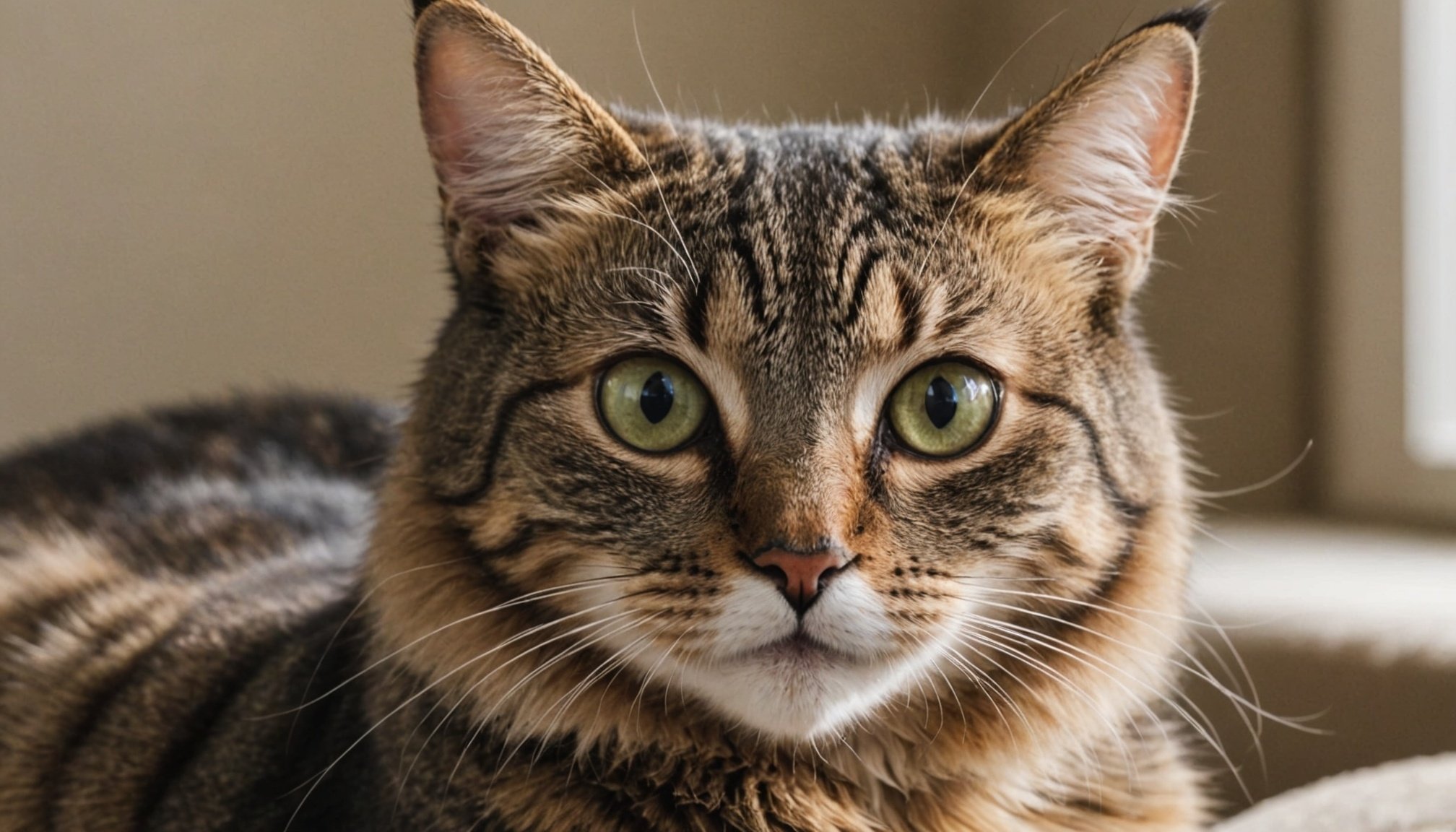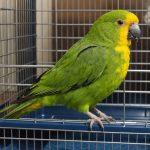Understanding Feline Breathing Patterns
Understanding breathing patterns in cats is crucial for maintaining their health. Typically, a healthy cat should have a breathing rate of 20 to 30 breaths per minute when at rest. Observing your cat while it is calm and relaxed provides the most accurate assessment of its breathing. Regular monitoring of your cat’s breathing patterns helps in identifying any deviations from the norm.
Normal vs Abnormal Breathing
Normal breathing involves smooth, rhythmic movements without effort or noise. If you notice any laboured or rapid breathing, it could indicate an issue. Abnormal breathing can include symptoms such as wheezing, gasping, or significantly increased effort to breathe. These symptoms warrant a visit to the veterinarian, as they could signify respiratory distress, heart problems, or other health issues.
Additional reading : Creating a balanced diet for your hyperthyroid cat: effective strategies for weight management and energy boost
Monitoring your cat’s breathing regularly is vital. Changes in breathing patterns can be the first indicator of potential health problems. Observing abnormalities early can lead to prompt veterinary intervention and increase the likelihood of a favourable outcome. In summary, understanding and routinely checking your cat’s breathing patterns is a proactive step in ensuring your feline friend’s overall well-being.
Methods for Monitoring Your Cat’s Breathing at Home
Keeping track of your feline friend’s respiratory health is crucial. Regular home monitoring can reveal early signs of potential issues.
Topic to read : Building a safe haven for cats: essential tips to aid your feline’s orthopedic surgery recovery
Utilizing Visual Cues for Observation
Visual observation is a simple yet effective method of monitoring your cat’s breathing. During rest, a cat should breathe smoothly with a gentle rise and fall of the abdomen. In contrast, increased activity might result in more pronounced but still rhythmic breathing. Watch for any irregularities, like laboured breaths or changes in rate.
A keen eye on changes in posture or behaviour is equally essential. A cat that adopts different sitting or lying positions might be seeking ways to alleviate discomfort during breathing. Recognising subtle changes can offer insights into your pet’s respiratory status.
Keeping a Daily Log
Maintaining a daily log is an invaluable way to track your cat’s breathing over time. Note the number of breaths per minute during rest, typically around 20-30 for a healthy adult cat. This enables you to identify patterns that may indicate health issues, like ongoing rapid or shallow breathing.
Implementing Technology
Adopting technology can enhance real-time monitoring. Apps and devices are available for effortless tracking of your pet’s health. They provide alerts and insights, ensuring prompt attention to any observed changes in breathing patterns. This integration of technology supports vigilant and precise monitoring.
Common Respiratory Problems in Cats
Cats, much like humans, can suffer from various respiratory issues that impact their health and wellbeing. Several common conditions in cats include asthma, bronchitis, and pneumonia. These ailments can hinder a cat’s ability to breathe comfortably and, if not treated, may lead to more serious health complications.
Asthma in cats is a chronic respiratory condition characterized by the narrowing of airways, causing wheezing, coughing, and difficulty breathing. This can occur due to an overactive immune response to feline health problems, such as allergens like pollen, dust, or cigarette smoke. Bronchitis involves inflammation of the bronchi, leading to persistent coughing and the production of phlegm. Pneumonia, on the other hand, is an infection that inflames the air sacs in one or both lungs, causing them to fill with fluid.
Identifying symptoms associated with these respiratory problems early on is crucial. Common signs include rapid breathing, persistent coughing, nasal discharge, and a visible struggle to breathe. Potential causes for these respiratory issues may range from viral infections, allergens, and pollutants. Understanding the underlying factors and seeking veterinary advice ensures timely interventions and helps in maintaining feline health.
Symptoms to Watch For
Monitoring your cat’s health indicators is vital in ensuring early identification of potential respiratory issues. Recognizing the signs of respiratory distress early can lead to more effective interventions.
Key Indicators of Respiratory Issues
Several observable symptoms could point to respiratory problems in cats. If you notice your cat coughing, wheezing, or experiencing labored breathing, it’s essential to be vigilant. These symptoms could indicate underlying health issues requiring attention. Additionally, changes in your cat’s appetite or behavior, such as eating less or showing reduced interest in activities, might hint at health problems.
Behavioral Changes as Symptoms
Certain behavioral changes can serve as health indicators. If a typically active cat becomes lethargic or starts hiding more often, these could signal respiratory distress or other health concerns. Similarly, grooming habits often reflect a cat’s health status. A decrease in grooming can be related to breathing issues, as cats may avoid movements that make breathing more difficult.
When Symptoms Worsen
It’s crucial to understand that respiratory symptoms can escalate from mild to severe. Noting any progression in symptoms is key to intervening timely. Promptly addressing changes can prevent complications and ensure your cat receives the necessary care. Monitoring these signs of respiratory distress can make a significant difference in maintaining your cat’s health.
When to Seek Veterinary Help
As a cat owner, understanding when to seek veterinary care is crucial for your feline friend’s well-being. Recognizing signs of health emergencies and acting promptly can make a significant difference.
One of the primary guidelines to remember is to always trust your instinct. If you suspect something is not right with your cat, it is often better to consult with a veterinary professional. They provide important guidance and help assess whether an emergency visit is necessary.
When discussing respiratory concerns with a veterinarian, it is essential to ask relevant questions. These can include:
- Are there any environmental changes affecting my cat’s breathing?
- Has there been any recent exposure to allergens or toxins?
- What immediate steps should I take to ease my cat’s symptoms?
Having a veterinary contact for emergencies is vital. Ensure you have their contact details readily available, especially for situations that occur outside regular office hours. This preparation can save precious time and lead to more effective treatment for your pet.
In summary, advocating for your pet’s health involves vigilance and readiness to seek professional advice, ensuring your cat receives the best possible care in emergencies.
Preventive Care Tips for Respiratory Health
Ensuring the respiratory wellness of pets is crucial to their overall wellbeing. By focusing on a holistic approach, pet owners can effectively nurture cat health and minimize respiratory issues.
Regular Veterinary Check-ups
Consistent veterinary visits are vital for early detection and prevention of respiratory ailments. These check-ups allow veterinarians to assess your pet’s respiratory health and tailor preventive care plans. Regular vaccinations also play a key role in fostering respiratory wellness by safeguarding pets against common illnesses.
Environmental Considerations
Creating a home environment free of irritants significantly aids in nurturing cat health. Ensure your living space is free from pollutants by using air purifiers and avoiding smoke exposure. Maintaining fresh air flow and optimal humidity levels prevents respiratory irritations. Open windows as often as possible or consider ventilation systems to enhance indoor air quality.
Nutrition and Overall Wellness
A balanced diet contributes significantly to a robust respiratory system. Offer your pets well-rounded meals rich in essential nutrients to support their immune system. Incorporating exercise into their routine and ensuring weight management also aids in sustaining optimal respiratory health. Regular physical activity enhances lung capacity and reduces the risk of obesity-related respiratory issues.










